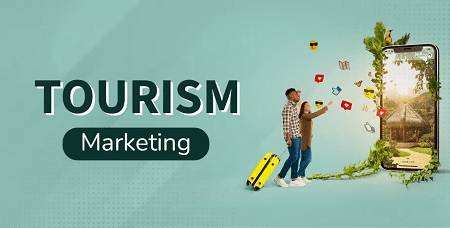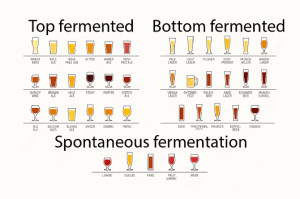Tourism Marketing policy-
Tourism marketing policy refers to the strategies and guidelines set by governments or tourism boards to promote and enhance tourism in a particular region or country. These policies are crucial for attracting visitors, boosting local economies, and managing the overall tourism industry sustainably. Here are some key elements typically included in tourism marketing policies:
- Market Research and Analysis: Understanding target markets, their preferences, behaviors, and trends is essential. This helps in shaping marketing strategies that resonate with potential tourists.
- Branding and Positioning: Developing a unique identity and positioning the destination in a competitive marketplace. This includes creating a compelling narrative about what sets the destination apart and why tourists should visit.
- Promotion and Advertising: Utilizing various marketing channels such as digital marketing, social media, print media, and partnerships to reach target audiences effectively. Campaigns may focus on specific demographics, seasons, or events.
- Infrastructure and Services Development: Ensuring that the destination has adequate infrastructure, accommodations, transportation, and tourist services to support visitor needs and expectations.
- Sustainability and Responsible Tourism: Integrating principles of sustainable tourism into marketing strategies to preserve natural and cultural resources, minimize environmental impact, and support local communities.
- Collaboration and Partnerships: Working with stakeholders including local businesses, hospitality providers, airlines, and travel agencies to leverage resources and create integrated tourism experiences.
- Crisis Management: Developing contingency plans and strategies to address emergencies, natural disasters, or other disruptions that could impact tourism.
- Measurement and Evaluation: Establishing metrics and benchmarks to assess the effectiveness of marketing efforts, including visitor numbers, economic impact, and visitor satisfaction.
- Policy Adaptation: Continuously reviewing and adapting marketing policies in response to changing market conditions, technological advancements, or shifts in consumer behavior.
- Legal and Regulatory Frameworks: Ensuring that marketing activities comply with local regulations and policies related to tourism, advertising, and consumer protection.
Effective tourism marketing policies are dynamic and responsive, designed to attract tourists while ensuring the sustainability and long-term success of the destination as a tourist hub.
What is Required Tourism Marketing policy
A Required Tourism Marketing Policy outlines the essential components and strategies necessary for effectively promoting and developing tourism in a specific region or country. Here’s a detailed outline of what such a policy typically includes:
- Vision and Objectives: Clearly defined goals and aspirations for tourism development, such as increasing visitor numbers, extending length of stays, promoting specific attractions or regions, and boosting economic benefits.
- Market Analysis and Segmentation: Comprehensive research on target markets, including demographic profiles, travel preferences, spending behaviors, and trends. This helps in identifying primary and secondary markets for targeted marketing efforts.
- Branding and Positioning Strategy: Developing a distinct brand identity for the destination that highlights its unique selling points (USPs) and differentiates it from competitors. This includes crafting a compelling narrative and visual identity that resonates with target audiences.
- Marketing Channels and Campaigns: Utilizing a mix of marketing channels such as digital platforms (website, social media), traditional media (print, television), events, and partnerships with travel agencies and tour operators. Campaigns should be tailored to reach specific market segments effectively.
- Product Development and Infrastructure: Ensuring that the destination has adequate tourism infrastructure, accommodations, transportation options, and tourist facilities to meet visitor expectations and enhance their experience.
- Sustainability and Responsible Tourism Practices: Integrating principles of sustainable tourism into all aspects of marketing and operations. This includes promoting eco-friendly practices, preserving cultural heritage, and supporting local communities.
- Collaboration and Stakeholder Engagement: Building partnerships with local businesses, government agencies, hospitality providers, and community organizations to foster a unified approach to tourism development and marketing.
- Crisis Management and Risk Mitigation: Developing contingency plans and protocols to manage crises, emergencies, and disruptions that may impact tourism, such as natural disasters, health emergencies, or political instability.
- Monitoring, Evaluation, and Adaptation: Establishing key performance indicators (KPIs) to measure the effectiveness of marketing efforts, visitor satisfaction levels, economic impacts, and return on investment (ROI). Regularly reviewing and adapting strategies based on performance data and market trends.
- Legal and Regulatory Compliance: Ensuring that all marketing activities comply with local, national, and international laws and regulations governing tourism, advertising, consumer protection, and environmental sustainability.
- Financial Planning and Resource Allocation: Allocating sufficient budget and resources to support marketing initiatives, infrastructure development, and promotional campaigns effectively.
- Training and Capacity Building: Investing in training programs and capacity building initiatives for tourism industry stakeholders to enhance service quality, professionalism, and destination management skills.
A Required Tourism Marketing Policy should be dynamic and flexible, capable of adapting to changes in the tourism market, technological advancements, and shifting consumer preferences. It serves as a roadmap for sustainable tourism development while maximizing the economic, social, and cultural benefits of tourism for the destination and its residents.
Who is Required Tourism Marketing policy
If you’re asking “who” in the context of a Required Tourism Marketing Policy, it typically refers to the stakeholders or entities responsible for developing, implementing, and overseeing the policy. These could include:
- Government Agencies: National, regional, or local tourism boards or ministries responsible for tourism development and promotion.
- Tourism Boards and Authorities: Organizations specifically tasked with promoting and marketing a destination or region to attract tourists.
- Private Sector: Tourism businesses, including hotels, tour operators, airlines, and attractions, which collaborate with public entities to promote tourism and enhance visitor experiences.
- Community Organizations: Local communities and cultural groups involved in tourism activities, often through initiatives that promote sustainable tourism and preserve local heritage.
- Academic and Research Institutions: Universities and research organizations that contribute knowledge and expertise to inform tourism policies and strategies.
- International Organizations: Bodies like the UN World Tourism Organization (UNWTO) or regional tourism associations that provide guidelines, support, and best practices for sustainable tourism development.
These stakeholders collectively work together to formulate and implement a cohesive tourism marketing policy that aims to achieve economic growth, cultural preservation, and environmental sustainability through tourism activities. Each plays a crucial role in ensuring that tourism marketing efforts are effective, responsible, and aligned with the long-term interests of the destination and its residents.
When is Required Tourism Marketing policy
The phrase “Required Tourism Marketing policy” seems to suggest a need or necessity for such a policy rather than a specific time or date. However, if you’re asking about when a tourism marketing policy is typically developed or implemented, it can vary depending on the circumstances and objectives of the destination. Here are some common scenarios or times when a tourism marketing policy might be considered or put into effect:
- Destination Planning and Development: Tourism marketing policies are often developed during the initial stages of destination planning or when there’s a desire to enhance tourism infrastructure and visitor experiences.
- Rebranding or Repositioning: When a destination wants to reposition itself in the tourism market or undergo a rebranding effort to attract new types of tourists or differentiate itself from competitors.
- Preparation for Major Events: Cities or regions hosting major events such as international conferences, sports tournaments, or cultural festivals may develop specific tourism marketing policies to capitalize on increased visitor interest and economic opportunities.
- Seasonal Campaigns: Some destinations develop seasonal tourism marketing policies to capitalize on peak travel periods or to attract visitors during off-peak seasons through targeted promotional campaigns.
- Crisis Management: In response to crises such as natural disasters, political instability, or global health emergencies, destinations may develop emergency tourism marketing policies to mitigate negative impacts on tourism and rebuild visitor confidence.
- Long-term Strategic Planning: Tourism marketing policies are often part of broader long-term strategic plans for economic development, sustainability, and cultural preservation within a destination.
The timing of when a tourism marketing policy is developed or revised depends on factors such as market conditions, strategic goals, available resources, and the political and economic climate of the destination. It’s essential for these policies to be dynamic and adaptable to changing circumstances to effectively promote tourism and achieve sustainable growth over time.
Where is Required Tourism Marketing policy

The phrase “Required Tourism Marketing policy” typically refers to a policy document or framework that outlines strategies and guidelines for promoting tourism in a specific location or jurisdiction. Here are some contexts where you might find or apply a Required Tourism Marketing policy:
- Government Agencies: National, regional, or local tourism boards or ministries often develop and implement tourism marketing policies. These policies are housed within government offices responsible for tourism promotion and development.
- Tourism Boards and Authorities: Organizations specifically dedicated to promoting a destination or region to attract tourists typically have their own tourism marketing policies. These policies are often published and publicly available on their websites or through official publications.
- Tourism Strategic Plans: In many cases, tourism marketing policies are embedded within broader tourism strategic plans. These plans outline long-term goals, objectives, and actions for tourism development, including marketing strategies.
- Publications and Official Documents: Tourism marketing policies may be documented in official publications such as tourism development plans, marketing strategies, promotional campaigns, and economic impact assessments related to tourism.
- Websites and Online Platforms: Tourism boards and government agencies often publish their tourism marketing policies on their official websites. These documents provide insights into the destination’s tourism strategy, target markets, branding efforts, and promotional activities.
- Tourism Industry Associations: Industry associations and organizations involved in tourism development and promotion may also contribute to or align with tourism marketing policies set by governmental bodies or tourism boards.
- International Standards and Guidelines: For global destinations, tourism marketing policies may align with international standards and guidelines set by organizations like the UN World Tourism Organization (UNWTO) or regional tourism associations.
In summary, Required Tourism Marketing policies can be found in government offices, tourism boards, official publications, strategic plans, and online platforms associated with tourism promotion and development. They serve as foundational documents that guide efforts to attract visitors, stimulate economic growth, and enhance the overall tourism experience in a destination.
How is Required Tourism Marketing policy
The development and implementation of a Required Tourism Marketing policy involve several key steps and considerations to ensure its effectiveness in promoting tourism and achieving sustainable growth. Here’s a structured approach to how a tourism marketing policy is typically formulated and executed:
- Research and Analysis:
- Market Research: Conduct comprehensive research to understand current tourism trends, visitor demographics, traveler behaviors, and competitive destinations.
- Destination Analysis: Assess the destination’s strengths, weaknesses, opportunities, and threats (SWOT analysis) to identify unique selling points (USPs) and competitive advantages.
- Setting Objectives and Goals:
- Define clear and measurable objectives for tourism development, such as increasing visitor arrivals, extending length of stays, boosting tourism revenue, enhancing visitor satisfaction, and promoting cultural and environmental sustainability.
- Branding and Positioning Strategy:
- Develop a distinct brand identity for the destination based on its unique attributes, cultural heritage, natural landscapes, and tourism offerings.
- Position the destination strategically in the tourism market to attract target segments effectively.
- Marketing Mix Development:
- Determine the appropriate marketing channels (digital marketing, social media, traditional advertising, partnerships, etc.) to reach target audiences.
- Create integrated marketing campaigns that align with the destination’s brand identity and appeal to different market segments.
- Product Development and Infrastructure Enhancement:
- Enhance tourism infrastructure, amenities, and services to meet the needs and expectations of visitors.
- Develop new tourism products or experiences that align with market demand and destination strengths.
- Sustainability and Responsible Tourism Practices:
- Integrate sustainability principles into all aspects of tourism marketing and operations, promoting responsible tourism practices among visitors and stakeholders.
- Support initiatives that conserve natural resources, protect cultural heritage, and benefit local communities.
- Collaboration and Stakeholder Engagement:
- Foster partnerships with local businesses, tourism operators, hospitality providers, government agencies, community organizations, and international stakeholders.
- Encourage collaboration to maximize resources, share expertise, and create cohesive tourism experiences.
- Monitoring and Evaluation:
- Establish key performance indicators (KPIs) to monitor the effectiveness of marketing efforts, tourism performance, visitor satisfaction, economic impacts, and sustainability outcomes.
- Regularly evaluate and adjust strategies based on performance data, market trends, and stakeholder feedback.
- Policy Implementation and Management:
- Allocate resources, budget, and manpower effectively to implement the tourism marketing policy.
- Implement clear policies, guidelines, and protocols to ensure compliance with regulatory requirements and ethical standards.
- Continual Improvement and Adaptation:
- Remain agile and responsive to changes in the tourism market, technological advancements, and shifts in consumer behavior.
- Continually update the tourism marketing policy based on emerging trends, best practices, and lessons learned from past campaigns.
By following these steps, destinations can develop a robust Required Tourism Marketing policy that enhances their attractiveness to visitors, drives sustainable tourism growth, and maximizes economic and social benefits for local communities.
Case Study on Tourism Marketing policy
Tourism Marketing Policy for Sunshine Land
1. Background and Situation Analysis
Overview: Sunshine Land is a tropical island nation known for its pristine beaches, rich cultural heritage, and vibrant marine life. However, it has historically relied on seasonal tourism and faces competition from neighboring destinations.
Challenges: Limited infrastructure in some areas, seasonal fluctuations in visitor numbers, and a need to diversify tourism offerings beyond sun-and-beach holidays.
2. Objectives
- Increase Visitor Arrivals: Aim to increase annual tourist arrivals by 20% over the next five years.
- Extend Length of Stays: Encourage longer stays by promoting cultural experiences, eco-tourism, and adventure activities.
- Sustainable Development: Implement sustainable tourism practices to preserve natural resources and protect cultural heritage.
3. Strategy Development
Market Segmentation: Conducted market research to identify primary target segments:
- Families: Emphasize family-friendly activities and accommodations.
- Adventure Seekers: Promote eco-tourism, hiking, and diving expeditions.
- Cultural Enthusiasts: Highlight festivals, historical sites, and local traditions.
Branding and Positioning:
- Developed a brand identity as “The Enchanted Isles” to evoke a sense of adventure, relaxation, and cultural richness.
- Positioned Sunshine Land as a premier eco-tourism destination with sustainable practices.
4. Marketing Mix
Integrated Campaigns:
- Digital Marketing: Launched a new website with interactive features, blogs, and social media campaigns showcasing local experiences and sustainability initiatives.
- Traditional Advertising: Partnered with travel magazines and influencers to feature Sunshine Land’s unique offerings.
- Events and Promotions: Organized cultural festivals, eco-tours, and adventure packages during off-peak seasons to attract diverse markets.
5. Product Development and Infrastructure
- Infrastructure Improvement: Upgraded transportation networks, expanded eco-lodges, and improved waste management systems.
- New Experiences: Developed guided eco-trails, cultural workshops, and marine conservation programs to enrich visitor experiences.
6. Sustainability Initiatives
- Implemented policies to minimize plastic use, promote recycling, and support local communities through tourism revenues.
- Partnered with NGOs and local organizations to preserve marine biodiversity and cultural heritage sites.
7. Stakeholder Engagement
- Collaborated with local businesses, tour operators, and community groups to ensure alignment with tourism goals and enhance service quality.
- Engaged government agencies to streamline regulations and support tourism infrastructure development.
8. Monitoring and Evaluation
- Established KPIs including visitor arrivals, average length of stay, revenue per tourist, and environmental impact assessments.
- Conducted regular surveys and feedback mechanisms to gauge visitor satisfaction and adapt strategies accordingly.
9. Policy Implementation and Management
- Formulated clear guidelines and training programs for tourism operators and service providers to uphold quality standards and sustainability practices.
- Monitored compliance with environmental regulations and ethical tourism guidelines.
10. Results and Adaptation
- Achievements: Sunshine Land experienced a 15% increase in tourist arrivals in the first year, with longer average stays and positive feedback on eco-tourism initiatives.
- Adaptations: Continuously reviewed and adjusted marketing campaigns based on visitor feedback, emerging trends, and environmental considerations.
Conclusion
Through a strategic tourism marketing policy, Sunshine Land successfully transformed its tourism industry by diversifying offerings, enhancing sustainability, and improving visitor experiences. By aligning branding efforts with sustainable practices and engaging stakeholders effectively, Sunshine Land positioned itself as a competitive and responsible tourism destination in the global market.
This case study demonstrates how a comprehensive tourism marketing policy can drive economic growth, preserve cultural heritage, and protect natural environments while meeting the diverse needs of visitors and stakeholders.
White paper on Tourism Marketing policy
Driving Sustainable Growth in [Destination Name]
Executive Summary
- Overview of the importance of tourism for economic growth and cultural preservation.
- Summary of key objectives and strategies outlined in the white paper.
1. Introduction
- Background of [Destination Name] as a tourism destination.
- Purpose and scope of the white paper.
2. Situation Analysis
- Current tourism trends and challenges in [Destination Name].
- Analysis of visitor demographics, travel patterns, and competitive landscape.
3. Vision and Objectives
- Vision statement for tourism development in [Destination Name].
- Specific objectives: increasing visitor arrivals, extending length of stays, promoting sustainable tourism practices.
4. Market Research and Segmentation
- Detailed analysis of target markets (e.g., families, adventure seekers, cultural enthusiasts).
- Insights from market research on consumer preferences, behaviors, and motivations.
5. Branding and Positioning Strategy
- Development of a unique brand identity for [Destination Name].
- Positioning strategy to differentiate from competitors and appeal to target segments.
6. Marketing Mix
- Integrated marketing campaigns: digital marketing, traditional advertising, events, partnerships.
- Campaign themes and messaging tailored to different market segments.
7. Product Development and Infrastructure
- Enhancements in tourism infrastructure (accommodations, transportation, attractions).
- Introduction of new tourism products and experiences aligned with market demand.
8. Sustainability Initiatives
- Integration of sustainable tourism practices into marketing strategies.
- Policies for environmental conservation, cultural preservation, and community involvement.
9. Stakeholder Engagement
- Collaboration with local businesses, government agencies, and community organizations.
- Partnerships to support tourism development and enhance visitor experiences.
10. Monitoring and Evaluation
- Key performance indicators (KPIs) to measure success (e.g., visitor numbers, economic impact, sustainability metrics).
- Methods for collecting visitor feedback and conducting performance evaluations.
11. Policy Implementation and Management
- Implementation plan: timelines, responsibilities, and resource allocation.
- Policies and guidelines to ensure compliance with regulatory requirements and ethical standards.
12. Conclusion
- Summary of achievements and anticipated outcomes.
- Commitment to ongoing adaptation and improvement based on feedback and market dynamics.
Appendices
- Supporting data, charts, and graphs.
- Examples of marketing materials and campaigns.
This outline provides a structured approach to developing a white paper on tourism marketing policy. Each section should be supported by data, research findings, case studies, and practical examples to substantiate the strategies and recommendations proposed. The white paper serves as a guiding document for stakeholders involved in tourism promotion and development, aiming to drive sustainable growth while maximizing economic and social benefits for the destination and its communities.
Industrial Application of Tourism Marketing policy
The industrial application of tourism marketing policy refers to how principles and strategies of tourism marketing are adapted and utilized within the broader industrial and economic context of a region or country. Here’s how tourism marketing policies can be applied in industrial settings:
1. Economic Development and Diversification
- Attraction of Investment: Just as tourism marketing attracts visitors, it can attract investors interested in developing infrastructure, accommodations, and amenities.
- Industry Clusters: Tourism can stimulate related industries such as construction, hospitality services, retail, and transportation, fostering industrial clusters that benefit from increased tourist traffic.
2. Branding and Promotion
- Destination Branding: Applying destination branding techniques to industrial zones or business parks can attract businesses and skilled workers.
- Marketing Campaigns: Targeted marketing campaigns can promote industrial sectors to potential investors, showcasing advantages such as infrastructure, workforce skills, and governmental support.
3. Infrastructure Development
- Tourism Infrastructure: Upgrading roads, airports, and public transportation benefits both tourists and industrial operations.
- Industrial Zones: Developing industrial parks with modern facilities and utilities can attract businesses looking for convenient, well-equipped locations.
4. Sustainable Practices
- Environmental Sustainability: Applying sustainable tourism practices to industrial operations can mitigate environmental impact and enhance corporate social responsibility (CSR) efforts.
- Community Engagement: Engaging local communities in industrial development can mirror tourism strategies that emphasize local involvement and support.
5. Government Policies and Support
- Incentives: Governments can offer incentives for industries that align with tourism values, such as eco-friendly practices or cultural preservation.
- Regulation: Similar to tourism, industrial sectors may benefit from clear regulatory frameworks that promote sustainability and responsible practices.
6. Collaboration and Stakeholder Engagement
- Public-Private Partnerships: Collaborations between government, businesses, and local communities can mirror tourism partnerships, enhancing mutual benefits and sustainable development.
- Industry Associations: Establishing associations or councils for industrial sectors can facilitate collective marketing efforts, knowledge-sharing, and advocacy.
7. Crisis Management and Risk Mitigation
- Resilience Planning: Just as tourism industries prepare for crises, industrial sectors can develop contingency plans to manage disruptions like economic downturns or natural disasters.
- Diversification: Tourism marketing policies encourage diversification of tourist offerings; similarly, industrial sectors can diversify products, services, or markets to reduce vulnerability.
8. Technology and Innovation
- Digital Transformation: Leveraging digital platforms and technologies in industrial marketing can enhance visibility, efficiency, and competitiveness, mirroring digital strategies in tourism.
- Innovation Hubs: Developing innovation hubs or technology parks can attract tech-savvy industries, akin to tourism strategies promoting cultural or adventure hubs.
Conclusion
Applying tourism marketing policies to industrial contexts involves adapting strategies such as branding, infrastructure development, sustainability practices, and stakeholder engagement to attract investments, promote economic diversification, and foster sustainable growth. By leveraging these principles, industrial sectors can enhance competitiveness, attract skilled labor, and contribute to broader economic development goals.





